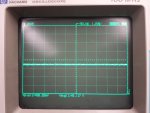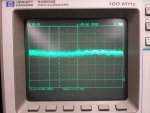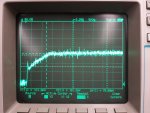- Joined
- Jul 4, 2012
- Messages
- 2,832
- Points
- 63
Finally received the last of the components yesterday and put together a board. Output seems fine when checking with a multimeter, but further inspection with a scope shows a lot of oscillation. This occurs both when powered via battery (18650 panny) or power supply (voltage set at 4.1V, no current limiting). Voltage across a 0.1 ohm resistor was scoped. Dummy load was set to drop ~4V. IC and inductor get warm after ~30 seconds, but nothing unusual. Can easily hold finger on them. Occasionally it will be steady for a few seconds and then start oscillating (while emitting a high-pitch tone). Any suggestions?
Scope pics can be seen here: https://imgur.com/a/pZDuo
Well for one thing you are supplying a higher voltage than you are dropping, so it isn't actually boosting. Try setting your load to 4.5-5V
edit: for your PSU, that is.
Last edited:






